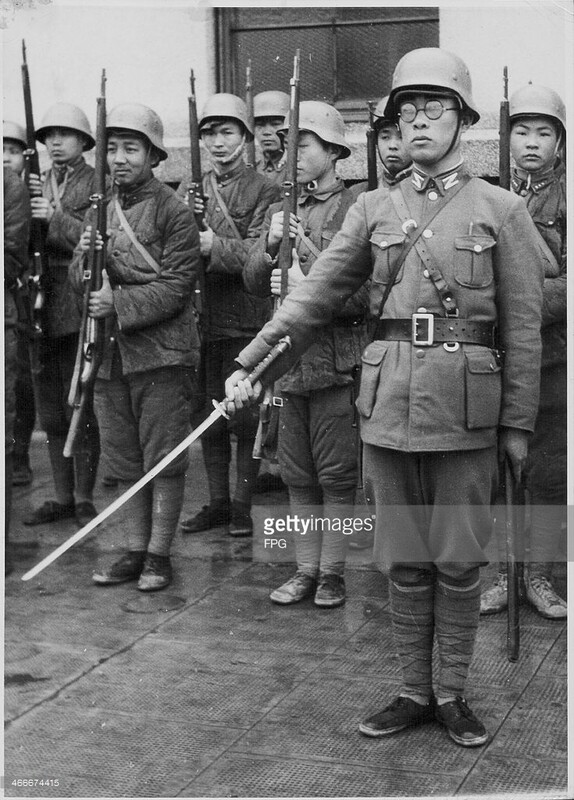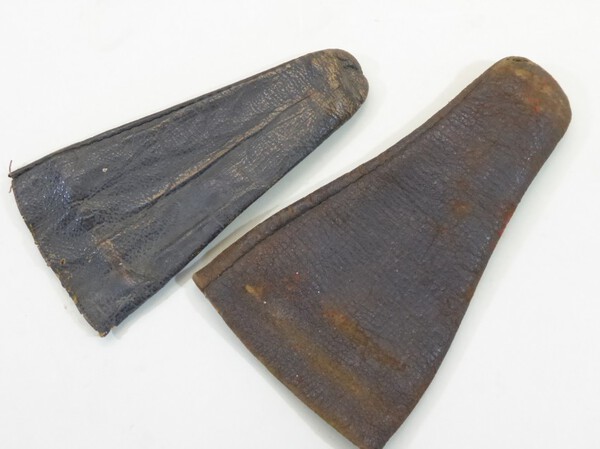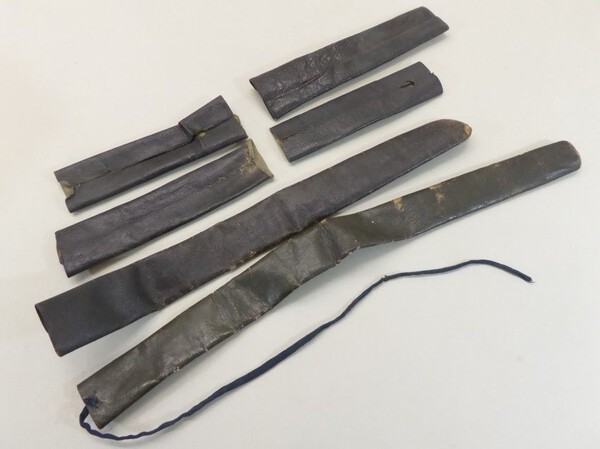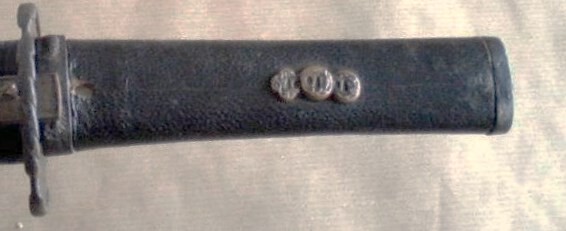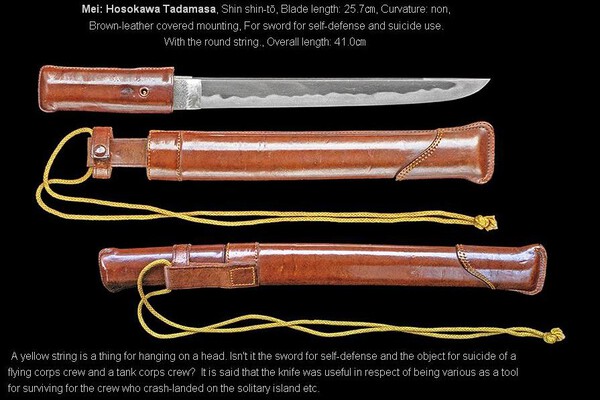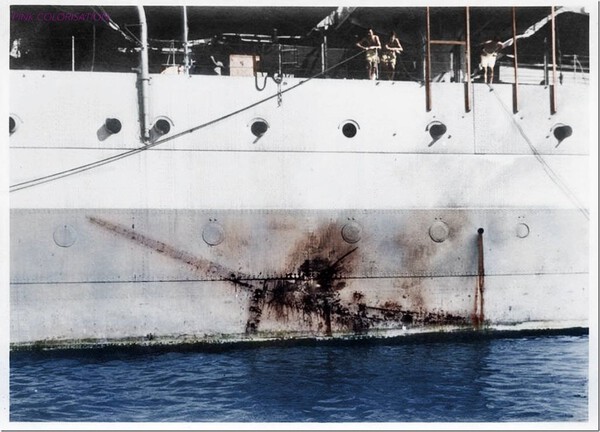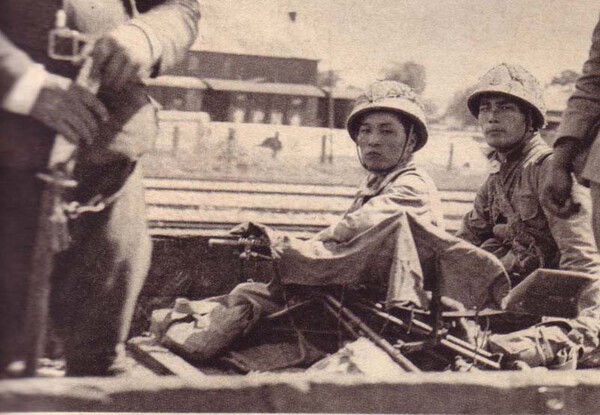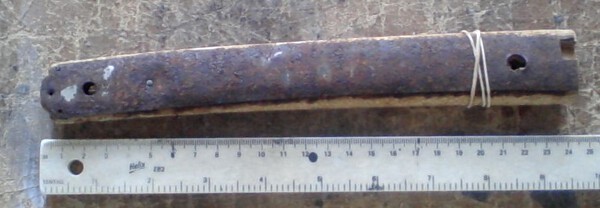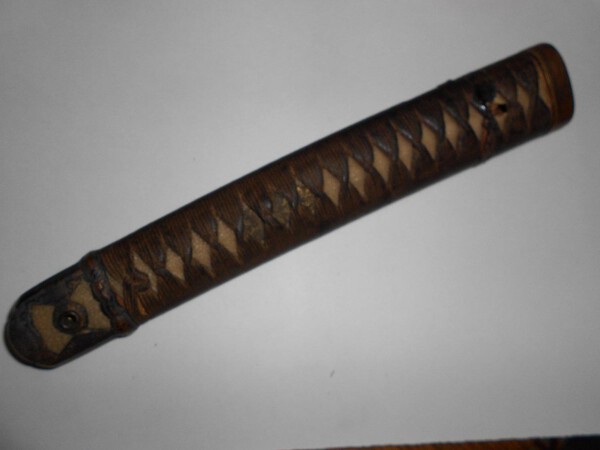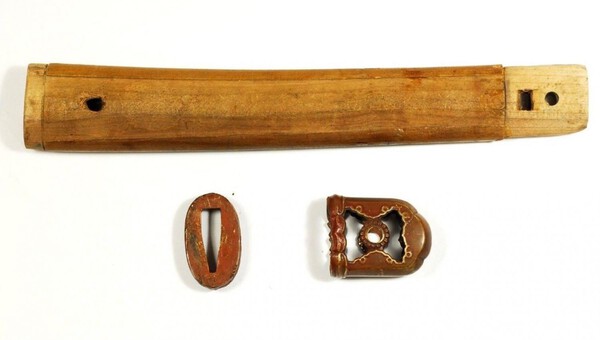-
Posts
1,690 -
Joined
-
Last visited
-
Days Won
11
Content Type
Profiles
Forums
Events
Store
Downloads
Gallery
Everything posted by Dave R
-

Japanese Katana Stamp Identification
Dave R replied to birdchild's topic in Military Swords of Japan
I rather like these early Showa katana, and would welcome one into my collection. Can we have some overall photo's of the whole sword and saya, it looks as though it is in a field saya, and I would be interested in whether it is in a removable leather cover, or a permanent sewn on cover. Thanks in advance. -
That is of course the problem! Fakes were being made even while the war was on, the Australian Army being notorious producers of such.
-
Certainly an oddity, but just possibly from one of these guys...... Tentara Sukarela Pembela Tanah Air PETA Indonesian independence troops.
-
It's complicated, like the politics of that time and place.
-
Not Wuhan Nationalist. The photo is labelled as... "Japanese Ta-Tao troops, criminals and youngsters making up an untrained military, in formation behind an officer with a Samurai sword, World War Two, Japan, circa 1939-1945" .There were three governments in China at this time, and a variety of warlords owing loyalty to non. Communist, Nationalist, and a Japanese subject "Nationalist" and then you get the individuals trying to hack out their own little island of independence. . Very complicated, and beyond the scope of this conversation. I am personally fascinated by this era and nation, but much is really not germane to this thread.
-
B Impossible to "know" but I hold that opinion because there is a lot of evidence that the Japanese "overlords" would have had an absolute Cow* if a non Japanese citizen had a real Shin-Gunto. They were very insistent that real Shin-Gunto and Nihonto were only in the hands of IJA and Gunzoku etc personnel. Local made copies were acceptable for the subject peoples, but not the real thing. Nihonto and Gunto could be bestowed as a gift to a respected individual, but not up for grabs by a foreign subject. (Cow* English vernacular for a fit of fury)
-
Bruce, do you remember these guys? A Chinese WW2 Gunto is militaria rather than Nihonto, but still greatly different from a modern Chinese made shinken. "Emergency swords" do exist, and are a subject all of their own... They are also the very devil to differentiate from the various categories of fake, so I doubt I will ever bother to buy one.......
-
They were also dealing with a massive expansion of the Military, more men, more officers, more equipment in general. Throw in the extension of sword wearing to Gunzoku, and damn near anyone with any authority at all,and they just couldn't keep up with demand!
-
To the best of my knowledge the one you show is one of the FEW genuine WW2 Chinese made Gunto.
-
Generally Edo era leather covered saya and tsuka were lacquered to waterproof them, which includes the Same if it was meant for rough use in the field. Traditional Japanese leather was oil tanned, like buckskin, which meant that it turned into a wash-leather when soaked through. The removable foul weather covers were given the same treatment. They turn up from time to time on Ebay, and I have bought a few of them when they were cheap enough.. These pictures are of items actually in my collection bought from Ebay.
-
Not mine, one I found on the internet....... But someone has a doozy. The tsuba is an Edo era item at a guess, and the saya a shirasaya in a field cover. Something of a story behind that one methinks.
-
-
With what is now known about so called Tanker or Crew mounts nowadays, I think the terms are less an accurate description of use, and more a handy shorthand for a smaller blade in field mounts. Dealers of course love the term, along with "ancestral blade" as they are good selling descriptions adding value to what are otherwise just decent enough blades refurbished for the war effort. What I find very interesting are the markedly short blades, tanto length or only a bit longer in all leather covered mounts that turn up from time to time.
-
Looking at the mounts, I reckon that they have been so badly abused as to be virtually worthless, and probably retrofitted. I have seen string wrapped WW2 swords before, one of them belonged in fact to divisional commander Lieutenant General Kensho, but generally they are the result of a bored matelot filling in time. The value and interest is all in the blade,.... and there is to me a lot of interest in this particular sword. There might be something under the string, as I think I can see black lacquered wood in places, but the lack of a tsuba etc makes me think this has been used as a machete or parang at some point and the string put on to hold it together. Below is a picture of Kensho's sword.
-
-
If it is being handled or wielded I would suggest protecting the Ito (wrap) with a wound bandage over the hilt, as was commonly done all through Japanese history. The original Ito here is looking a little fragile, and once it starts to go it can disintegrate quite rapidly.
-
Upper release button is pressed by the sword wielding hand, or you can press the lower release button with the hand holding the saya. It gives a a choice of grip on the tsuka so the hand is not choked against the tsuba, and can save a second or two when you need the blade out in a hurry.
-
My guess would be a hand forged factory made blade, and one of the higher end Showato. I really do not see a nihonto of the WW2 era going unsigned, especially with custom order fullers. If the nakago had shown some signs of age, I would have gone for it being a mumei Shin-Shinto
-
I have an Edo period tsuka with the same sharkskin under the Ito. Not common, but far from unknown.
-
Fake.
-
-
Sorry Bruce, but I suspect a retro fit (aka shotgun job). If you are going to cut with a blade the tsuka HAS to be a good fit, no ifs, no buts. Someones life depended on it. Taking a factory made tsuka blank, cutting the inside to fit and then doing the tsuka-maki would make a lot more sense. Scouring the 'net for parts as I do, I think I have found "blanks" on two occasions. Clean honoki wood, exterior finished but interior a bit rough and too small a cut out for most nakago. I have also seen Gunto tsuba punched to close the nakago-ana onto the blade in the traditional manner. Why number or assembly mark the pieces if the fit was not important?
-
Or a repair to a damaged tassel.
-
Well.... you don't get much better than that, do you?
-
I wonder if he was making a point to a Gajin collector.






